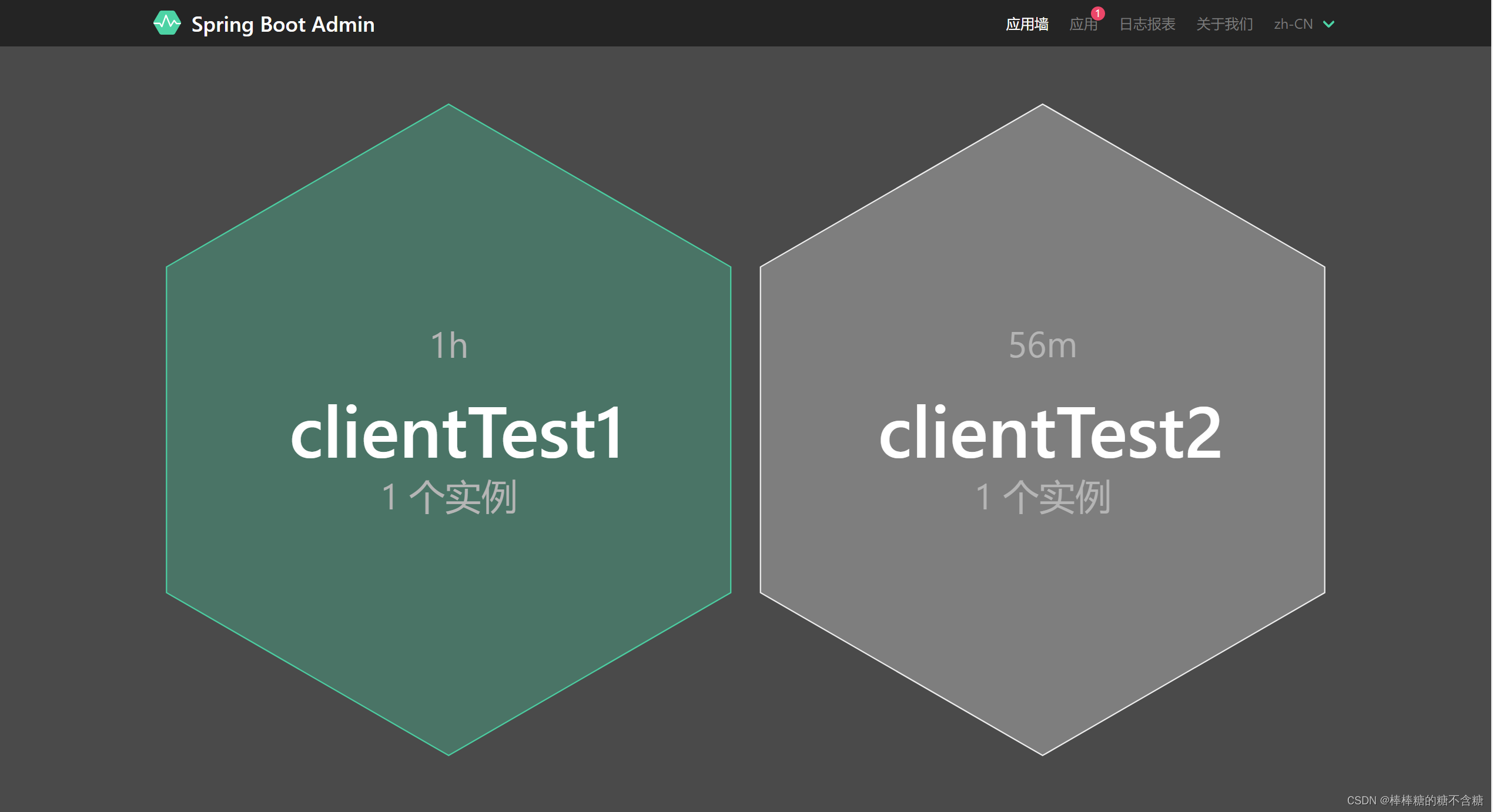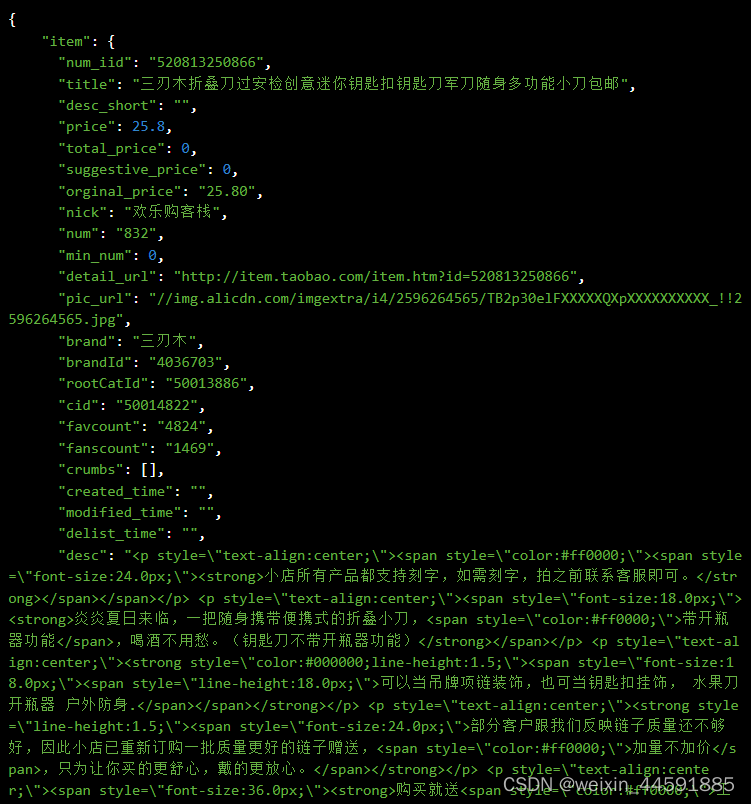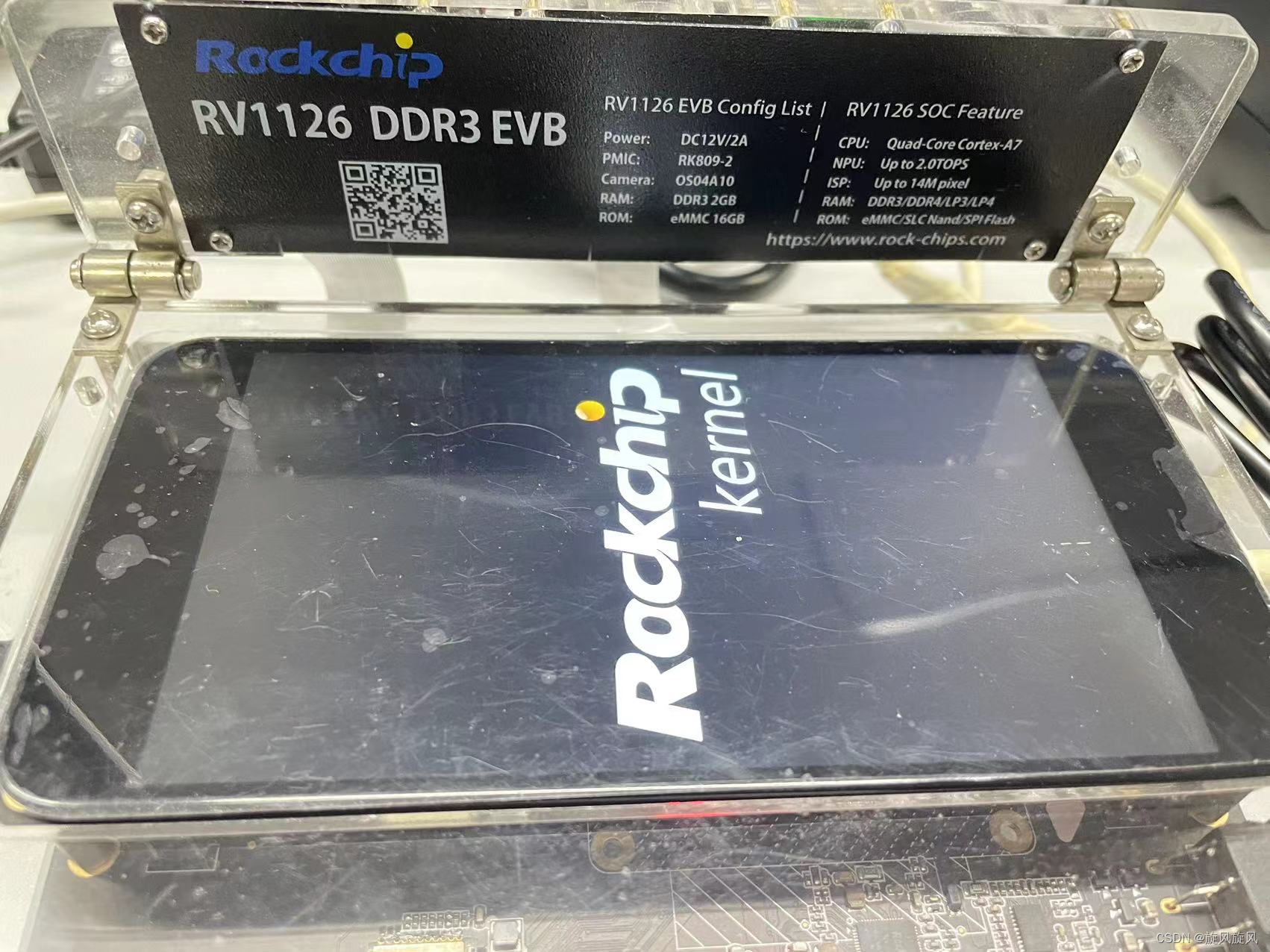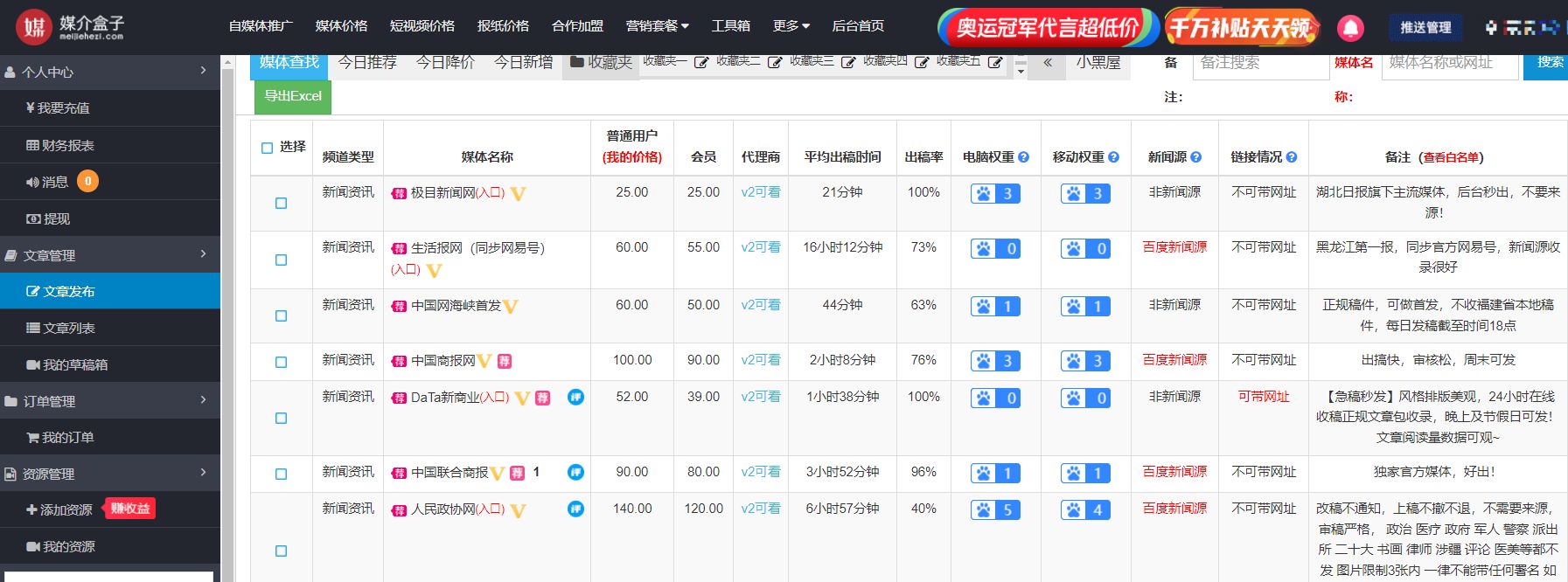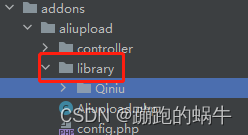ScheduledThreadPoolExecutor 线程池可以实现任务延时执行,那么它是怎么实现的呢?下面笔者进行详细分析
先看看它是怎么使用的
目录
1、延时执行使用
2、源码分析
2.1、ScheduledThreadPoolExecutor 初始化分析
2.2、ScheduledThreadPoolExecutor 执行延时任务分析
3、总结
1、延时执行使用
创建 ScheduledThreadPoolExecutor 可以直接new ScheduledThreadPoolExecutor;也可以使用 Executors.newScheduledThreadPool 得到 ScheduledExecutorService,ScheduledThreadPoolExecutor实现了 ScheduledExecutorService 接口
Executors.newScheduledThreadPool
package com.wsjzzcbq.java.thread.pool.scheduled;
import java.time.LocalDateTime;
import java.util.concurrent.Executors;
import java.util.concurrent.ScheduledExecutorService;
import java.util.concurrent.TimeUnit;
/**
* ScheduledThreadPoolLearn
*
* @author wsjz
* @date 2023/09/13
*/
public class ScheduledThreadPoolLearn {
public static void main(String[] args) {
ScheduledExecutorService service = Executors.newScheduledThreadPool(1);
System.out.println(LocalDateTime.now());
service.schedule(()->{
System.out.println("被酒莫惊春睡重,赌书消得泼茶香,当时只道是寻常");
System.out.println(LocalDateTime.now());
}, 8, TimeUnit.SECONDS);
service.shutdown();
}
}
ScheduledThreadPoolExecutor
package com.wsjzzcbq.java.thread.pool.scheduled;
import java.time.LocalDateTime;
import java.util.concurrent.ScheduledThreadPoolExecutor;
import java.util.concurrent.TimeUnit;
/**
* ScheduledThreadPoolLearn
*
* @author wsjz
* @date 2023/09/13
*/
public class ScheduledThreadPoolLearn {
public static void main(String[] args) {
ScheduledThreadPoolExecutor executor = new ScheduledThreadPoolExecutor(1);
System.out.println(LocalDateTime.now());
executor.schedule(()->{
System.out.println("被酒莫惊春睡重,赌书消得泼茶香,当时只道是寻常");
System.out.println(LocalDateTime.now());
}, 8, TimeUnit.SECONDS);
executor.shutdown();
}
}运行效果

延时8秒执行
2、源码分析
2.1、ScheduledThreadPoolExecutor 初始化分析
下面分析 ScheduledThreadPoolExecutor 是如何实现延时执行的
我们先看 new ScheduledThreadPoolExecutor 对象时做了哪些事情,因为在构造函数中初始化的东西后面会用到
通过构造函数点进去,可以看到下面的代码
/**
* Creates a new {@code ScheduledThreadPoolExecutor} with the
* given core pool size.
*
* @param corePoolSize the number of threads to keep in the pool, even
* if they are idle, unless {@code allowCoreThreadTimeOut} is set
* @throws IllegalArgumentException if {@code corePoolSize < 0}
*/
public ScheduledThreadPoolExecutor(int corePoolSize) {
super(corePoolSize, Integer.MAX_VALUE, 0, NANOSECONDS,
new DelayedWorkQueue());
}熟悉线程池原理的朋友应该知道阻塞队列在线程池中的作用,这里不做展开。ScheduledThreadPoolExecutor 使用的是 DelayedWorkQueue,看名字应该猜到它是延时工作队列,这个队列是在 ScheduledThreadPoolExecutor 内部自己实现的,是它的内部类

点击 super,我们看 ScheduledThreadPoolExecutor 它的父类做了哪些事情
/**
* Creates a new {@code ThreadPoolExecutor} with the given initial
* parameters and default thread factory and rejected execution handler.
* It may be more convenient to use one of the {@link Executors} factory
* methods instead of this general purpose constructor.
*
* @param corePoolSize the number of threads to keep in the pool, even
* if they are idle, unless {@code allowCoreThreadTimeOut} is set
* @param maximumPoolSize the maximum number of threads to allow in the
* pool
* @param keepAliveTime when the number of threads is greater than
* the core, this is the maximum time that excess idle threads
* will wait for new tasks before terminating.
* @param unit the time unit for the {@code keepAliveTime} argument
* @param workQueue the queue to use for holding tasks before they are
* executed. This queue will hold only the {@code Runnable}
* tasks submitted by the {@code execute} method.
* @throws IllegalArgumentException if one of the following holds:<br>
* {@code corePoolSize < 0}<br>
* {@code keepAliveTime < 0}<br>
* {@code maximumPoolSize <= 0}<br>
* {@code maximumPoolSize < corePoolSize}
* @throws NullPointerException if {@code workQueue} is null
*/
public ThreadPoolExecutor(int corePoolSize,
int maximumPoolSize,
long keepAliveTime,
TimeUnit unit,
BlockingQueue<Runnable> workQueue) {
this(corePoolSize, maximumPoolSize, keepAliveTime, unit, workQueue,
Executors.defaultThreadFactory(), defaultHandler);
}Executors.defaultThreadFactory() 使用默认的线程工厂,这里留个印象,因为后面会用
点击 defaultThreadFactory(),看看默认线程工厂方法的内容
/**
* Returns a default thread factory used to create new threads.
* This factory creates all new threads used by an Executor in the
* same {@link ThreadGroup}. If there is a {@link
* java.lang.SecurityManager}, it uses the group of {@link
* System#getSecurityManager}, else the group of the thread
* invoking this {@code defaultThreadFactory} method. Each new
* thread is created as a non-daemon thread with priority set to
* the smaller of {@code Thread.NORM_PRIORITY} and the maximum
* priority permitted in the thread group. New threads have names
* accessible via {@link Thread#getName} of
* <em>pool-N-thread-M</em>, where <em>N</em> is the sequence
* number of this factory, and <em>M</em> is the sequence number
* of the thread created by this factory.
* @return a thread factory
*/
public static ThreadFactory defaultThreadFactory() {
return new DefaultThreadFactory();
}这里new 一个 DefaultThreadFactory
我们点进去看看 DefaultThreadFactory
/**
* The default thread factory
*/
static class DefaultThreadFactory implements ThreadFactory {
private static final AtomicInteger poolNumber = new AtomicInteger(1);
private final ThreadGroup group;
private final AtomicInteger threadNumber = new AtomicInteger(1);
private final String namePrefix;
DefaultThreadFactory() {
SecurityManager s = System.getSecurityManager();
group = (s != null) ? s.getThreadGroup() :
Thread.currentThread().getThreadGroup();
namePrefix = "pool-" +
poolNumber.getAndIncrement() +
"-thread-";
}
public Thread newThread(Runnable r) {
Thread t = new Thread(group, r,
namePrefix + threadNumber.getAndIncrement(),
0);
if (t.isDaemon())
t.setDaemon(false);
if (t.getPriority() != Thread.NORM_PRIORITY)
t.setPriority(Thread.NORM_PRIORITY);
return t;
}
}它是 Executors 的内部类,newThread 方法要记一下,因为后面会用到
接下来我们回到 ScheduledThreadPoolExecutor 的父类 ThreadPoolExecutor

点击 this 看看详细的内容
/**
* Creates a new {@code ThreadPoolExecutor} with the given initial
* parameters.
*
* @param corePoolSize the number of threads to keep in the pool, even
* if they are idle, unless {@code allowCoreThreadTimeOut} is set
* @param maximumPoolSize the maximum number of threads to allow in the
* pool
* @param keepAliveTime when the number of threads is greater than
* the core, this is the maximum time that excess idle threads
* will wait for new tasks before terminating.
* @param unit the time unit for the {@code keepAliveTime} argument
* @param workQueue the queue to use for holding tasks before they are
* executed. This queue will hold only the {@code Runnable}
* tasks submitted by the {@code execute} method.
* @param threadFactory the factory to use when the executor
* creates a new thread
* @param handler the handler to use when execution is blocked
* because the thread bounds and queue capacities are reached
* @throws IllegalArgumentException if one of the following holds:<br>
* {@code corePoolSize < 0}<br>
* {@code keepAliveTime < 0}<br>
* {@code maximumPoolSize <= 0}<br>
* {@code maximumPoolSize < corePoolSize}
* @throws NullPointerException if {@code workQueue}
* or {@code threadFactory} or {@code handler} is null
*/
public ThreadPoolExecutor(int corePoolSize,
int maximumPoolSize,
long keepAliveTime,
TimeUnit unit,
BlockingQueue<Runnable> workQueue,
ThreadFactory threadFactory,
RejectedExecutionHandler handler) {
if (corePoolSize < 0 ||
maximumPoolSize <= 0 ||
maximumPoolSize < corePoolSize ||
keepAliveTime < 0)
throw new IllegalArgumentException();
if (workQueue == null || threadFactory == null || handler == null)
throw new NullPointerException();
this.acc = System.getSecurityManager() == null ?
null :
AccessController.getContext();
this.corePoolSize = corePoolSize;
this.maximumPoolSize = maximumPoolSize;
this.workQueue = workQueue;
this.keepAliveTime = unit.toNanos(keepAliveTime);
this.threadFactory = threadFactory;
this.handler = handler;
}这是它真正开始初始化的地方,初始化线程池需要的参数
到现在为止我们只需要记住2个参数,在 ScheduledThreadPoolExecutor 构造阶段,一个是它使用了DelayedWorkQueue,另一个是它使用了默认的线程工厂
2.2、ScheduledThreadPoolExecutor 执行延时任务分析
下面看 schedule 方法做了哪些事情
还是点进去看源码
/**
* @throws RejectedExecutionException {@inheritDoc}
* @throws NullPointerException {@inheritDoc}
*/
public ScheduledFuture<?> schedule(Runnable command,
long delay,
TimeUnit unit) {
if (command == null || unit == null)
throw new NullPointerException();
RunnableScheduledFuture<?> t = decorateTask(command,
new ScheduledFutureTask<Void>(command, null,
triggerTime(delay, unit)));
delayedExecute(t);
return t;
}这里先判断参数是不是null,不是null 的话构建一个 RunnableScheduledFuture 对象
我们先看 triggerTime 方法
/**
* Returns the trigger time of a delayed action.
*/
private long triggerTime(long delay, TimeUnit unit) {
return triggerTime(unit.toNanos((delay < 0) ? 0 : delay));
}
/**
* Returns the trigger time of a delayed action.
*/
long triggerTime(long delay) {
return now() +
((delay < (Long.MAX_VALUE >> 1)) ? delay : overflowFree(delay));
}这里会将延时时间转换成纳秒并加上现在时间进行返回
然后我们看 ScheduledFutureTask 构造函数
/**
* Creates a one-shot action with given nanoTime-based trigger time.
*/
ScheduledFutureTask(Runnable r, V result, long ns) {
super(r, result);
this.time = ns;
this.period = 0;
this.sequenceNumber = sequencer.getAndIncrement();
}ScheduledFutureTask 的父类
/**
* Creates a {@code FutureTask} that will, upon running, execute the
* given {@code Runnable}, and arrange that {@code get} will return the
* given result on successful completion.
*
* @param runnable the runnable task
* @param result the result to return on successful completion. If
* you don't need a particular result, consider using
* constructions of the form:
* {@code Future<?> f = new FutureTask<Void>(runnable, null)}
* @throws NullPointerException if the runnable is null
*/
public FutureTask(Runnable runnable, V result) {
this.callable = Executors.callable(runnable, result);
this.state = NEW; // ensure visibility of callable
}这里就是将线程池执行的 Runnable 和延时时间赋值给 ScheduledFutureTask 对应的属性,然后将ScheduledFutureTask 返回
我们回到 schedule 方法
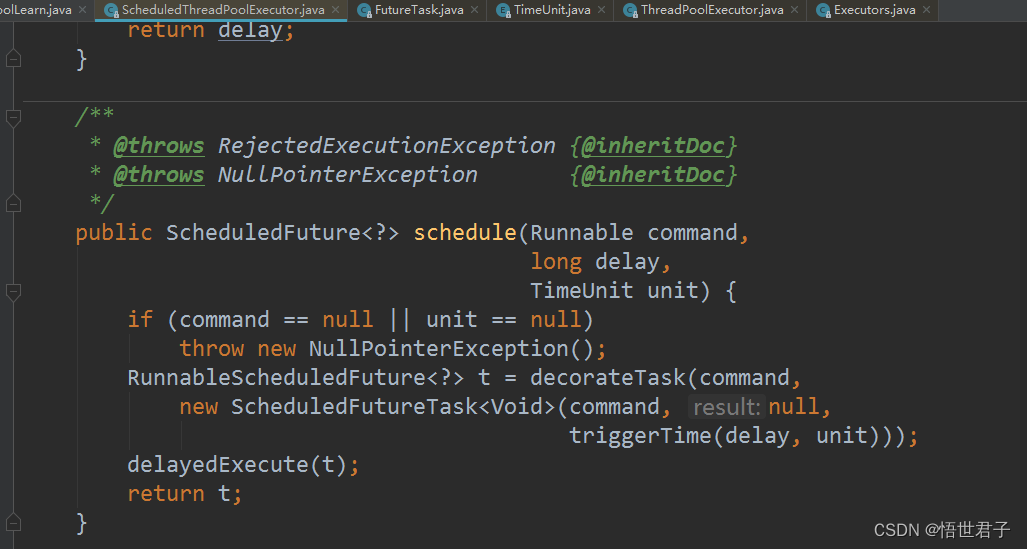
下面我们看关键的 delayedExecute(t) 方法
/**
* Main execution method for delayed or periodic tasks. If pool
* is shut down, rejects the task. Otherwise adds task to queue
* and starts a thread, if necessary, to run it. (We cannot
* prestart the thread to run the task because the task (probably)
* shouldn't be run yet.) If the pool is shut down while the task
* is being added, cancel and remove it if required by state and
* run-after-shutdown parameters.
*
* @param task the task
*/
private void delayedExecute(RunnableScheduledFuture<?> task) {
if (isShutdown())
reject(task);
else {
super.getQueue().add(task);
if (isShutdown() &&
!canRunInCurrentRunState(task.isPeriodic()) &&
remove(task))
task.cancel(false);
else
ensurePrestart();
}
}这里先判断线程池是不是 Shutdown,如果没有的话会将 RunnableScheduledFuture 对象添加到队列,什么队列呢?当然是上面初始化时候的 DelayedWorkQueue,我们先不看DelayedWorkQueue 的 add 方法逻辑,先看线程池的代码
添加到队列后,又进行Shutdown判断,我们直接看 ensurePrestart() 方法
/**
* Same as prestartCoreThread except arranges that at least one
* thread is started even if corePoolSize is 0.
*/
void ensurePrestart() {
int wc = workerCountOf(ctl.get());
if (wc < corePoolSize)
addWorker(null, true);
else if (wc == 0)
addWorker(null, false);
}workerCountOf(c) 返回当前线程数量,初始返回 0;corePoolSize 是我们构造 ScheduledThreadPoolExecutor 对象时传的 1,因此会进入 addWorker(null, true) 方法
/**
* Checks if a new worker can be added with respect to current
* pool state and the given bound (either core or maximum). If so,
* the worker count is adjusted accordingly, and, if possible, a
* new worker is created and started, running firstTask as its
* first task. This method returns false if the pool is stopped or
* eligible to shut down. It also returns false if the thread
* factory fails to create a thread when asked. If the thread
* creation fails, either due to the thread factory returning
* null, or due to an exception (typically OutOfMemoryError in
* Thread.start()), we roll back cleanly.
*
* @param firstTask the task the new thread should run first (or
* null if none). Workers are created with an initial first task
* (in method execute()) to bypass queuing when there are fewer
* than corePoolSize threads (in which case we always start one),
* or when the queue is full (in which case we must bypass queue).
* Initially idle threads are usually created via
* prestartCoreThread or to replace other dying workers.
*
* @param core if true use corePoolSize as bound, else
* maximumPoolSize. (A boolean indicator is used here rather than a
* value to ensure reads of fresh values after checking other pool
* state).
* @return true if successful
*/
private boolean addWorker(Runnable firstTask, boolean core) {
retry:
for (;;) {
int c = ctl.get();
int rs = runStateOf(c);
//检查线程池状态
// Check if queue empty only if necessary.
if (rs >= SHUTDOWN &&
! (rs == SHUTDOWN &&
firstTask == null &&
! workQueue.isEmpty()))
return false;
for (;;) {
int wc = workerCountOf(c);
//判断线程数是够超出容量
if (wc >= CAPACITY ||
wc >= (core ? corePoolSize : maximumPoolSize))
return false;
//将线程数加 1
if (compareAndIncrementWorkerCount(c))
break retry;
c = ctl.get(); // Re-read ctl
if (runStateOf(c) != rs)
continue retry;
// else CAS failed due to workerCount change; retry inner loop
}
}
boolean workerStarted = false;
boolean workerAdded = false;
Worker w = null;
try {
w = new Worker(firstTask);
final Thread t = w.thread;
if (t != null) {
final ReentrantLock mainLock = this.mainLock;
mainLock.lock();
try {
// Recheck while holding lock.
// Back out on ThreadFactory failure or if
// shut down before lock acquired.
int rs = runStateOf(ctl.get());
if (rs < SHUTDOWN ||
(rs == SHUTDOWN && firstTask == null)) {
if (t.isAlive()) // precheck that t is startable
throw new IllegalThreadStateException();
workers.add(w);
int s = workers.size();
if (s > largestPoolSize)
largestPoolSize = s;
workerAdded = true;
}
} finally {
mainLock.unlock();
}
if (workerAdded) {
t.start();
workerStarted = true;
}
}
} finally {
if (! workerStarted)
addWorkerFailed(w);
}
return workerStarted;
}addWorker 方法前面 2个for 死循环先判断线程池状态,然后第2个for循环先判断worker线程数有没有超出容量,然后通过 compareAndIncrementWorkerCount(c) 将线程数加 1,然后结束2重循环
下面的代码先 new Worker(firstTask),然后将 worker 添加到 workers,最后调用 t.start() 方法结束
下面我们分析 Worker
t.start() 是 Worker 中的线程,由 final Thread t = w.thread 得到,我们先看 new Worker(firstTask)做了什么
/**
* Creates with given first task and thread from ThreadFactory.
* @param firstTask the first task (null if none)
*/
Worker(Runnable firstTask) {
setState(-1); // inhibit interrupts until runWorker
this.firstTask = firstTask;
this.thread = getThreadFactory().newThread(this);
}由上面的代码知道传入的 firstTask = null
这里的 thread 由线程工厂 getThreadFactory().newThread(this) 得到
而线程工厂是前面初始化时候的默认线程工厂,注意这里 getThreadFactory().newThread(this) 时传入了 this,这里是关键代码,这个 this 是什么,是当前 new 出来的 Worker对象,把new 出来的 Worker 对象作为线程的 Runnable 传进去,所以当 Worker 内的 thread 调用start 方法运行后,会执行 Worker 类的 run 方法。这里有些绕!
下面是默认线程工厂,注意看 newThread 方法
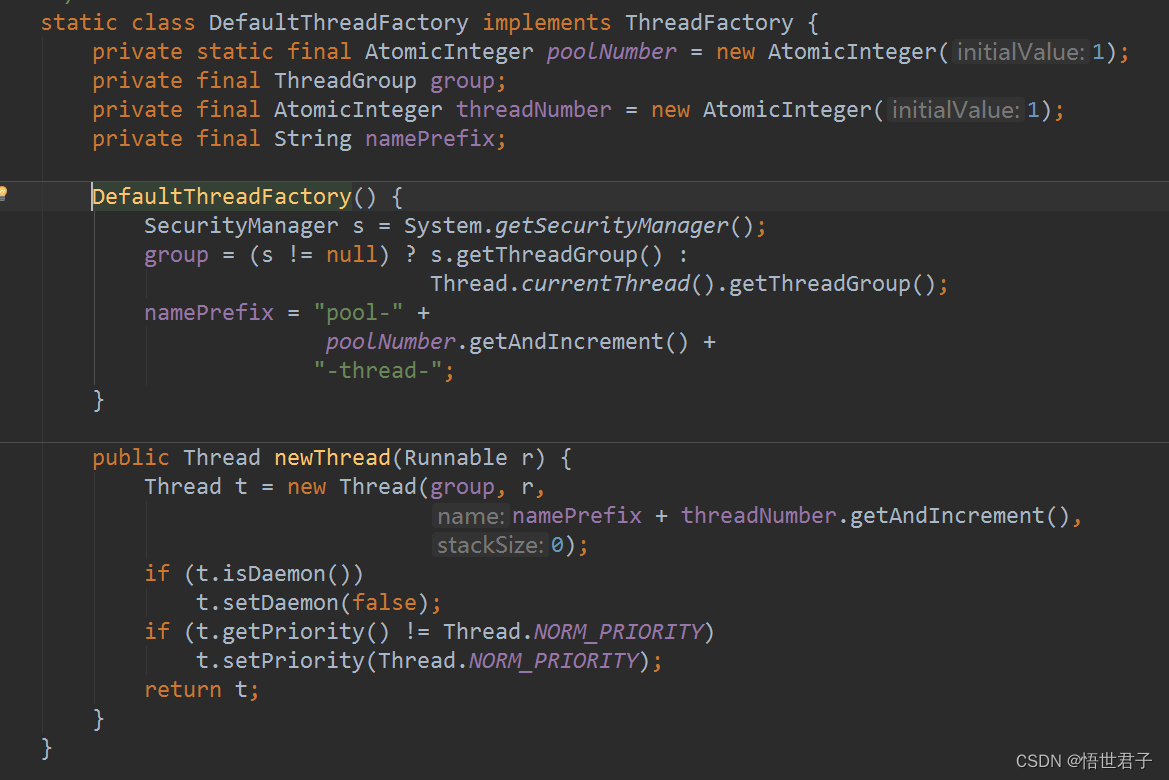
所以 t.start() 运行后,会进入 Worker 类的 run 方法
/** Delegates main run loop to outer runWorker */
public void run() {
runWorker(this);
}Worker 类的 run 方法调用外面的 runWorker 方法,并传入当前 Worker 对象
下面看 runWorker 方法
/**
* Main worker run loop. Repeatedly gets tasks from queue and
* executes them, while coping with a number of issues:
*
* 1. We may start out with an initial task, in which case we
* don't need to get the first one. Otherwise, as long as pool is
* running, we get tasks from getTask. If it returns null then the
* worker exits due to changed pool state or configuration
* parameters. Other exits result from exception throws in
* external code, in which case completedAbruptly holds, which
* usually leads processWorkerExit to replace this thread.
*
* 2. Before running any task, the lock is acquired to prevent
* other pool interrupts while the task is executing, and then we
* ensure that unless pool is stopping, this thread does not have
* its interrupt set.
*
* 3. Each task run is preceded by a call to beforeExecute, which
* might throw an exception, in which case we cause thread to die
* (breaking loop with completedAbruptly true) without processing
* the task.
*
* 4. Assuming beforeExecute completes normally, we run the task,
* gathering any of its thrown exceptions to send to afterExecute.
* We separately handle RuntimeException, Error (both of which the
* specs guarantee that we trap) and arbitrary Throwables.
* Because we cannot rethrow Throwables within Runnable.run, we
* wrap them within Errors on the way out (to the thread's
* UncaughtExceptionHandler). Any thrown exception also
* conservatively causes thread to die.
*
* 5. After task.run completes, we call afterExecute, which may
* also throw an exception, which will also cause thread to
* die. According to JLS Sec 14.20, this exception is the one that
* will be in effect even if task.run throws.
*
* The net effect of the exception mechanics is that afterExecute
* and the thread's UncaughtExceptionHandler have as accurate
* information as we can provide about any problems encountered by
* user code.
*
* @param w the worker
*/
final void runWorker(Worker w) {
Thread wt = Thread.currentThread();
Runnable task = w.firstTask;
w.firstTask = null;
w.unlock(); // allow interrupts
boolean completedAbruptly = true;
try {
while (task != null || (task = getTask()) != null) {
w.lock();
// If pool is stopping, ensure thread is interrupted;
// if not, ensure thread is not interrupted. This
// requires a recheck in second case to deal with
// shutdownNow race while clearing interrupt
if ((runStateAtLeast(ctl.get(), STOP) ||
(Thread.interrupted() &&
runStateAtLeast(ctl.get(), STOP))) &&
!wt.isInterrupted())
wt.interrupt();
try {
beforeExecute(wt, task);
Throwable thrown = null;
try {
task.run();
} catch (RuntimeException x) {
thrown = x; throw x;
} catch (Error x) {
thrown = x; throw x;
} catch (Throwable x) {
thrown = x; throw new Error(x);
} finally {
afterExecute(task, thrown);
}
} finally {
task = null;
w.completedTasks++;
w.unlock();
}
}
completedAbruptly = false;
} finally {
processWorkerExit(w, completedAbruptly);
}
}
这里先判断 Worker 的 firstTask 是不是 null,firstTask 是 null,程序会从 getTask() 中获取 task
我们先往下看流程,如果从 getTask() 中拿到了 task,下面会执行 task.run(),就是我们线程池要延时执行的 Runnable 的 run 方法。看到这没发现有延时的内容,也就是说延时和线程池执行流程没关系,那么延时是怎么实现的呢?我们就要看 getTask() 是怎么获取 task 的
/**
* Performs blocking or timed wait for a task, depending on
* current configuration settings, or returns null if this worker
* must exit because of any of:
* 1. There are more than maximumPoolSize workers (due to
* a call to setMaximumPoolSize).
* 2. The pool is stopped.
* 3. The pool is shutdown and the queue is empty.
* 4. This worker timed out waiting for a task, and timed-out
* workers are subject to termination (that is,
* {@code allowCoreThreadTimeOut || workerCount > corePoolSize})
* both before and after the timed wait, and if the queue is
* non-empty, this worker is not the last thread in the pool.
*
* @return task, or null if the worker must exit, in which case
* workerCount is decremented
*/
private Runnable getTask() {
boolean timedOut = false; // Did the last poll() time out?
for (;;) {
int c = ctl.get();
int rs = runStateOf(c);
// Check if queue empty only if necessary.
if (rs >= SHUTDOWN && (rs >= STOP || workQueue.isEmpty())) {
decrementWorkerCount();
return null;
}
int wc = workerCountOf(c);
// Are workers subject to culling?
boolean timed = allowCoreThreadTimeOut || wc > corePoolSize;
if ((wc > maximumPoolSize || (timed && timedOut))
&& (wc > 1 || workQueue.isEmpty())) {
if (compareAndDecrementWorkerCount(c))
return null;
continue;
}
try {
Runnable r = timed ?
workQueue.poll(keepAliveTime, TimeUnit.NANOSECONDS) :
workQueue.take();
if (r != null)
return r;
timedOut = true;
} catch (InterruptedException retry) {
timedOut = false;
}
}
}还是一个死循环,先判断线程池状态,再判断线程数
注意 timed,allowCoreThreadTimeOut 默认是 false,wc 不大于 corePoolSize,因此 timed 等于 false,下面 timed 的三目运算符会执行 workQueue.take(),workQueue 是前面的 DelayedWorkQueue
下面看 DelayedWorkQueue 的 take 方法
public RunnableScheduledFuture<?> take() throws InterruptedException {
final ReentrantLock lock = this.lock;
lock.lockInterruptibly();
try {
for (;;) {
RunnableScheduledFuture<?> first = queue[0];
if (first == null)
available.await();
else {
long delay = first.getDelay(NANOSECONDS);
if (delay <= 0)
return finishPoll(first);
first = null; // don't retain ref while waiting
if (leader != null)
available.await();
else {
Thread thisThread = Thread.currentThread();
leader = thisThread;
try {
available.awaitNanos(delay);
} finally {
if (leader == thisThread)
leader = null;
}
}
}
}
} finally {
if (leader == null && queue[0] != null)
available.signal();
lock.unlock();
}
}这里是真正实现延时的地方
首先还是一个死循环,DelayedWorkQueue 是基于数组实现的,先拿出队列最上方的元素,
RunnableScheduledFuture<?> first = queue[0],看它是否等于 null,等于 null 就等待,这是阻塞队列一贯的做法,如果不是null,看它的延时时间是否小于等于 0,小于等于 0 则出队;如果不小于等于 0,说明没到执行时间,available.awaitNanos(delay) 让线程等待需要延时的时长,等待时长结束后,开始新一轮循环,此时延时时间小于等于 0 满足,将任务出队返回。从而达到延时执行的效果
读者可能会有个疑问,DelayedWorkQueue 数组首下标的元素一定是延时时间最小的吗?
下面看 DelayedWorkQueue 的 add 方法实现,就是前面将 RunnableScheduledFuture 对象添加到队列的 add 方法
public boolean add(Runnable e) {
return offer(e);
}offer 方法
public boolean offer(Runnable x) {
if (x == null)
throw new NullPointerException();
RunnableScheduledFuture<?> e = (RunnableScheduledFuture<?>)x;
final ReentrantLock lock = this.lock;
lock.lock();
try {
int i = size;
if (i >= queue.length)
grow();
size = i + 1;
if (i == 0) {
queue[0] = e;
setIndex(e, 0);
} else {
siftUp(i, e);
}
if (queue[0] == e) {
leader = null;
available.signal();
}
} finally {
lock.unlock();
}
return true;
}如果是首次添加会把元素放在数组索引是0的位置,如果不是首次添加会调用 siftUp 方法
/**
* Sifts element added at bottom up to its heap-ordered spot.
* Call only when holding lock.
*/
private void siftUp(int k, RunnableScheduledFuture<?> key) {
while (k > 0) {
int parent = (k - 1) >>> 1;
RunnableScheduledFuture<?> e = queue[parent];
if (key.compareTo(e) >= 0)
break;
queue[k] = e;
setIndex(e, k);
k = parent;
}
queue[k] = key;
setIndex(key, k);
}这里我们假设是第2次添加,k=1,key 是新添加的元素,此时 k 大于 0,>>> 表示无符号右移位运算,得到的 parent 是 0,得到的 e 就是首位的元素,然后用新添加的 key 和 e 进行比较,如果 key 的延时时间比 e 长,结束循环,给数组索引是1的位置赋值 key;如果 key 的延时时间比 e 小的话,把索引是 1 的位置赋值 e,然后让 k = 0,结束循环,再把索引是0的位置赋值 key,这样就实现了索引是 0 的位置的元素总是延时时间最小的。再详细的细节笔者就不分析了,本文重点分析延时是如何实现的
3、总结
ScheduledThreadPoolExecutor 线程池是如何实现延时执行的?和线程池的执行流程无关,延时是通过延时队列实现的,当我们提交一个任务到线程池时,它不是先执行任务,而是先把任务添加到延时队列,然后启动 worker 线程执行,worker 线程以阻塞的方法从延时队列中获取任务,如果任务没到执行时间,worker 线程会等待需要延时的时间,等待延时时间结束后,进入新一轮循环,此时延时时间小于等于0,worker 线程可以从延时队列中获取任务,获取到任务后,走正常线程池的流程,执行任务,从而达到延时的效果
当然还有一些更详细的细节,比如延时队列中有一个任务等待执行,此时添加进来一个延时时间更短的任务,这时应该唤醒出于等待的线程,让它重新获取等待时间,进行等待。否则会导致新添加的更短延时时间的任务实际执行时间比应该执行的时间晚
至此完
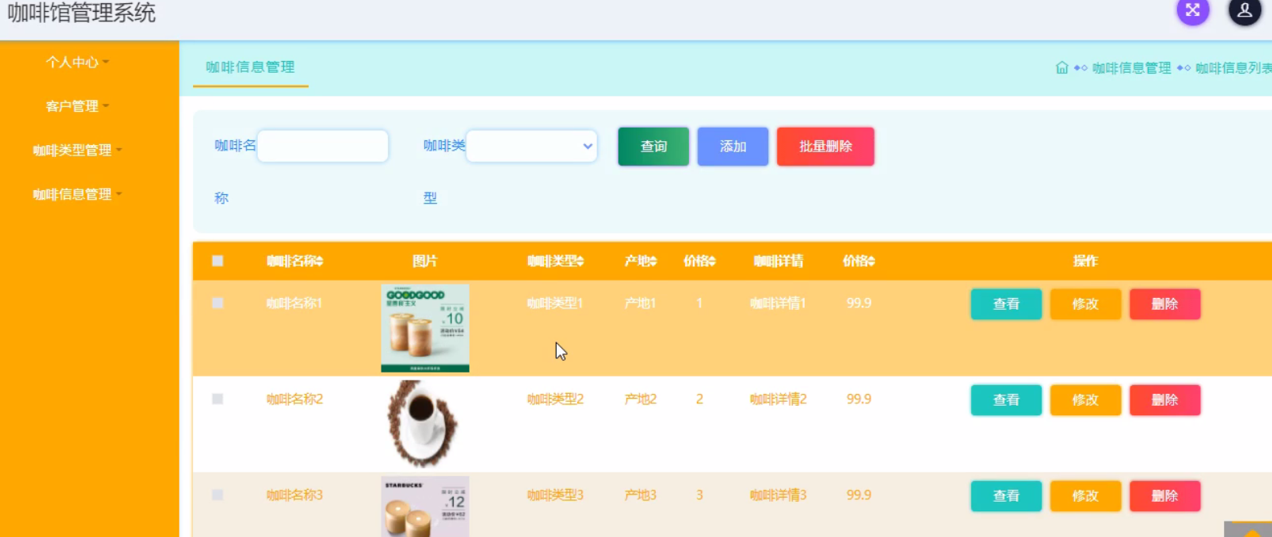
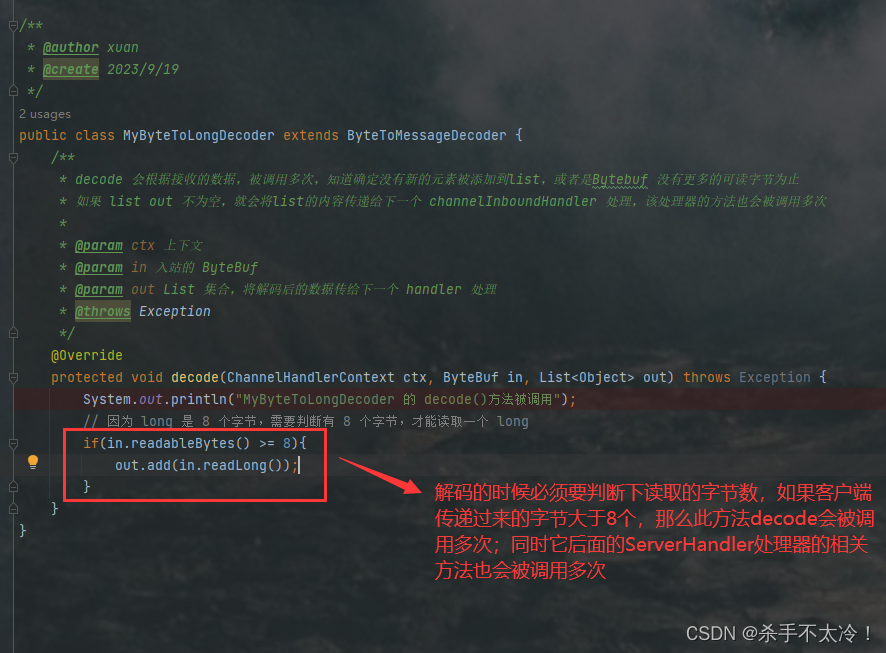
![[golang gui]fyne框架代码示例](https://img-blog.csdnimg.cn/61202ae1375f4bc69e39140392ba59cc.png)

